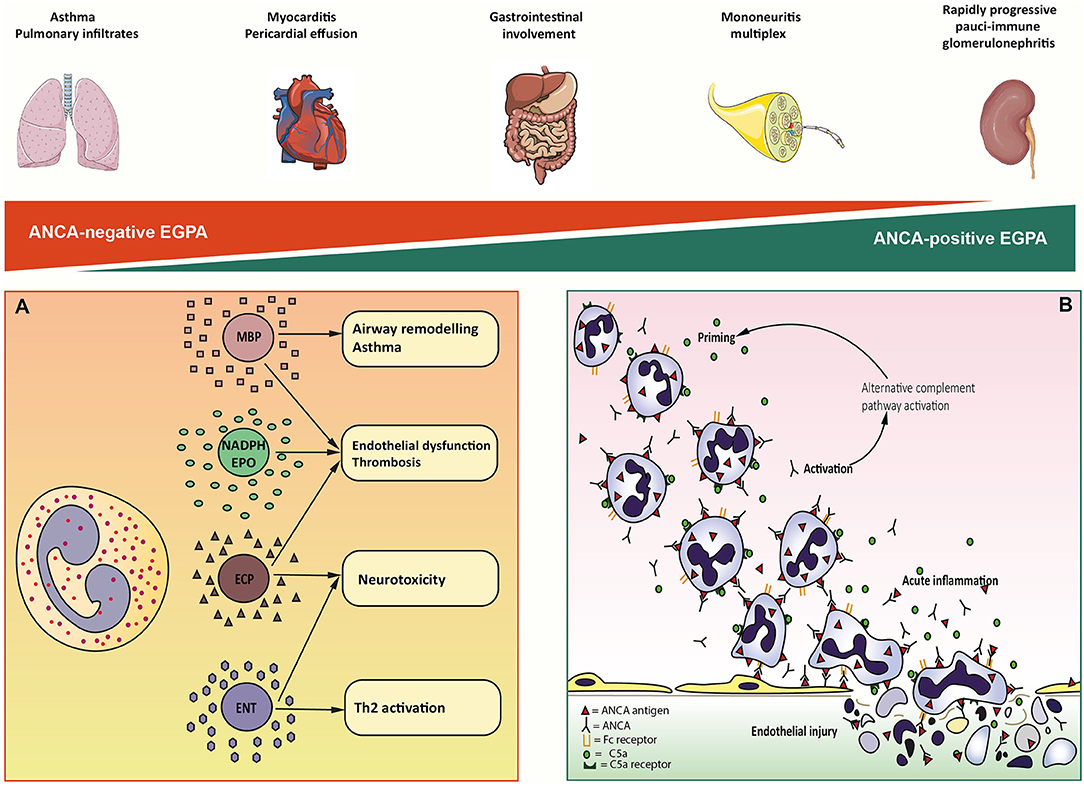Churg-Strauss Syndrome, now more commonly referred to as Eosinophilic Granulomatosis with Polyangiitis (EGPA), is a rare autoimmune condition that affects multiple systems in the body. This disorder is characterized by inflammation of blood vessels, high levels of eosinophils (a type of white blood cell), and the formation of granulomas. EGPA can cause a wide range of symptoms, making it challenging to diagnose and manage. In this guide, we will explore the causes, symptoms, diagnosis, treatment options, and lifestyle considerations for individuals living with this condition.

Understanding Churg-Strauss Syndrome
Churg-Strauss Syndrome is a form of vasculitis, which means it involves inflammation of the blood vessels. The inflammation can restrict blood flow to vital organs and tissues, leading to damage if left untreated. This condition primarily affects small- to medium-sized blood vessels and often occurs in individuals with a history of asthma or allergies.
Causes and Risk Factors
The exact cause of Churg-Strauss Syndrome remains unknown. However, researchers believe it may result from an abnormal immune system response triggered by environmental factors in genetically predisposed individuals. Some potential risk factors include:
- A history of asthma or allergic rhinitis
- Exposure to certain medications or infections
- Genetic predisposition
It is important to note that while these factors may increase the likelihood of developing the condition, they do not guarantee its onset.
Stages of the Disease
Churg-Strauss Syndrome typically progresses through three distinct stages, although not all individuals experience every stage. These stages include:
- The Allergic Stage: Characterized by asthma, hay fever, sinusitis, and other allergic reactions.
- The Eosinophilic Stage: Marked by an elevated level of eosinophils in the blood and tissues, often causing gastrointestinal issues or lung involvement.
- The Vasculitic Stage: Involves inflammation of blood vessels, leading to symptoms such as nerve pain, skin rashes, and organ damage.
Symptoms of Churg-Strauss Syndrome
The symptoms of this condition vary widely depending on which organs are affected. Common signs and symptoms include:
- Fatigue and general weakness
- Fever and night sweats
- Weight loss
- Asthma-like symptoms, including wheezing and shortness of breath
- Sinus infections or nasal polyps
- Skin rashes or purplish spots
- Numbness or tingling in the hands and feet due to nerve involvement
- Pain and swelling in the joints
- Gastrointestinal problems, such as abdominal pain or diarrhea
Because these symptoms overlap with many other conditions, diagnosing Churg-Strauss Syndrome can be difficult without thorough evaluation.
Diagnosing Churg-Strauss Syndrome
Diagnosis requires a combination of clinical evaluation, laboratory tests, and imaging studies. Since the symptoms mimic those of other diseases, healthcare providers must rule out alternative diagnoses before confirming the presence of this syndrome.
Laboratory Tests
Blood tests play a crucial role in identifying abnormalities associated with the condition. Key findings may include:
- Elevated levels of eosinophils in the blood
- Inflammatory markers such as C-reactive protein or erythrocyte sedimentation rate
- Antineutrophil cytoplasmic antibodies (ANCA), though not present in all cases
Imaging Studies
Imaging techniques help assess organ involvement and identify areas of inflammation. Common methods include:
- Chest X-rays to detect lung abnormalities
- CT scans or MRIs to evaluate internal organs
- Ultrasound for assessing blood vessel health
Biopsy
In some cases, a biopsy of affected tissue—such as skin, lungs, or nerves—may be necessary to confirm the diagnosis. A biopsy can reveal characteristic features like granulomas or vasculitis.
Treatment Options
While there is no cure for Churg-Strauss Syndrome, treatment focuses on reducing inflammation, suppressing the immune system, and managing symptoms. Early intervention is critical to prevent complications and improve quality of life.
Medications
Several types of medications are commonly used to treat this condition:
- Corticosteroids: These anti-inflammatory drugs, such as prednisone, are often the first line of treatment. They help reduce inflammation and suppress the immune response.
- Immunosuppressants: Medications like cyclophosphamide or azathioprine may be prescribed to further control the immune system’s activity.
- Biologic Therapies: Drugs targeting specific components of the immune system, such as mepolizumab, have shown promise in treating severe cases.
Monitoring and Follow-Up
Regular follow-up appointments are essential to monitor disease activity and adjust treatment plans as needed. Healthcare providers may perform periodic blood tests, imaging studies, and physical examinations to track progress and detect any relapses early.
Lifestyle Considerations
Living with Churg-Strauss Syndrome requires careful attention to lifestyle choices to minimize symptoms and maintain overall well-being.
Diet and Nutrition
A balanced diet rich in fruits, vegetables, whole grains, and lean proteins can support immune function and promote healing. Individuals should avoid foods that trigger allergic reactions or exacerbate existing symptoms.
Exercise and Physical Activity
Regular exercise helps improve cardiovascular health, boost mood, and enhance energy levels. Low-impact activities such as walking, swimming, or yoga are excellent options for individuals managing fatigue or joint pain.
Stress Management
Chronic stress can worsen symptoms and contribute to flare-ups. Techniques such as mindfulness meditation, deep breathing exercises, and adequate rest can help manage stress effectively.
Support Networks
Connecting with others who understand the challenges of living with this condition can provide emotional support and practical advice. Support groups, both online and in-person, offer valuable resources for patients and their families.
Potential Complications
If left untreated, Churg-Strauss Syndrome can lead to serious complications affecting various organs. Some potential risks include:
- Kidney damage or failure
- Heart problems, such as myocarditis or pericarditis
- Peripheral neuropathy, resulting in numbness or weakness
- Respiratory issues, including pneumonia or pulmonary hemorrhage
Timely medical intervention and adherence to treatment protocols are vital to minimizing these risks.
Research and Advances
Ongoing research continues to shed light on the underlying mechanisms of Churg-Strauss Syndrome and explore new therapeutic approaches. Recent advancements in biologic therapies and personalized medicine hold promise for improving outcomes and reducing side effects associated with traditional treatments.
Clinical trials are also underway to test novel medications and interventions. Participation in these studies may provide access to cutting-edge treatments while contributing to scientific knowledge about the condition.





